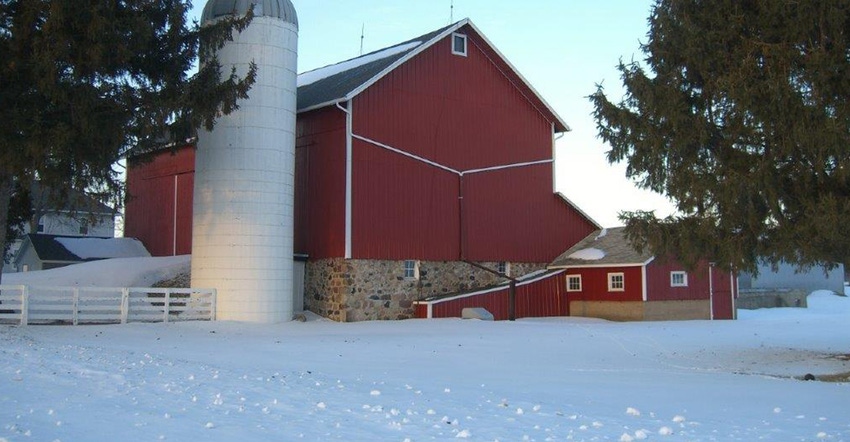January 19, 2017

Editor’s note: We would like to feature more working farm barns. Contact Jan Corey Arnett at [email protected].
Most barn cats are happy just to have a place where they can get out of the weather, burrow into some hay, and find a foolish mouse for a tasty snack. The looks of the barn are of little consequence.
But if it matters, the four cats who occupy the Schultz barn at 8612 25 ½ Mile Road, Homer, have it made in the shade. The well-kept barn, family farmhouse and adjacent farm buildings are immaculate.
Galen Schultz, who lives on the family farm with his wife, Kathy, says the turn-of-the-century barn is on land first owned by his great-grandfather Henry Schultz in 1902, then his grandfather Reed in 1915, and later his father, Garfield, in 1932. The farm has been owned since 1991 by Galen’s brother, Gerry, and his wife, Ginny.
“There was a smaller house here first and likely a small barn,” Galen says. “In the ’20s just about everyone had a few cows for their own milk and to churn butter.”
Galen’s father was born in the small house in 1909 and took over running the farm in the early 1930s. Eventually the barn had 18 stanchions running north and south and five going east and west. The stanchions are still there, some of them partially made of wood.
Conforming to sanitation standards of the day, the Schultzes added a milkhouse to the barn in 196, but for a time still carried milk in stainless steel buckets to the bulk tank.
“I probably weighed about 125 at the time,” Galen recalls, “so 30 to 35 pounds of milk per bucket was a lot of weight to carry the length of the barn before we got the pipeline.”
The dairy operation continued until 1996, with help from Garfield’s sons and daughters-in-law. When Galen worked part time in a factory, Gerry did the milking. And when Gerry was in the Army, Galen took over after their father could no longer handle the work. Gerry farms just across the road from Galen on a second farm purchased by his father and mother Esther in 1952. The buildings there are also in photo-worthy, well-kept condition. His barn was once used for beef cattle.
“My dad always said as we’d drive around the country and see barns falling down,” Galen recalls, “if you keep a good roof on your barn, it will last forever.”
Many men will admit that it is their wives who have a special fondness for farm structures, and Kathy is among that group. Galen says, “About 12 years ago the paint on the silo was peeling, but when we talked about taking the silo down, Kathy said ‘No! It won’t look like a farm without the silo.’” So, the silo was repainted.
Then, his voice takes on a mischievous tone. “We had to wait until she was gone to take down the old wood fence. It was getting too hard to keep paint on it. I bet my brother it would take her two weeks to notice — and it did. But I had to distract her a little to look the other way for a while!”
Real barns are almost always a source of treasures and the Schultz barn is no exception. Galen remembers the old track at the ridgeline of the mow and the forks to lift hay from a wagon below in the days before elevators. He still hopes to remove an old horse-drawn sleigh that is stored on timbers at the center of the barn between the mows. “I should have gotten it down when there was hay to help. Now it is 30 feet in the air.”
Everyone on a farm has his or her chores. The Schultz brothers and their wives work together to plant and harvest crops, and to cut and split firewood.
Farm life also teaches one other certainty. If something is going to break down, usually the gutter cleaner, it does it on a holiday when you have plans or when you are in a hurry to go somewhere. A sloped, shed-like covering for gutter-cleaning equipment was built at the back of the barn and connected to a small building, which housed a bull and a few heifers. Keeping the gutter cleaner protected from the weather helped to minimize breakdowns.
“My brother and I have put steel siding on the barns now,” Galen adds. “You’ve got to keep a barn protected from the weather. Do that and it will last another 200 years.”
Corey Arnett writes from Battle Creek.
About the Author(s)
You May Also Like




